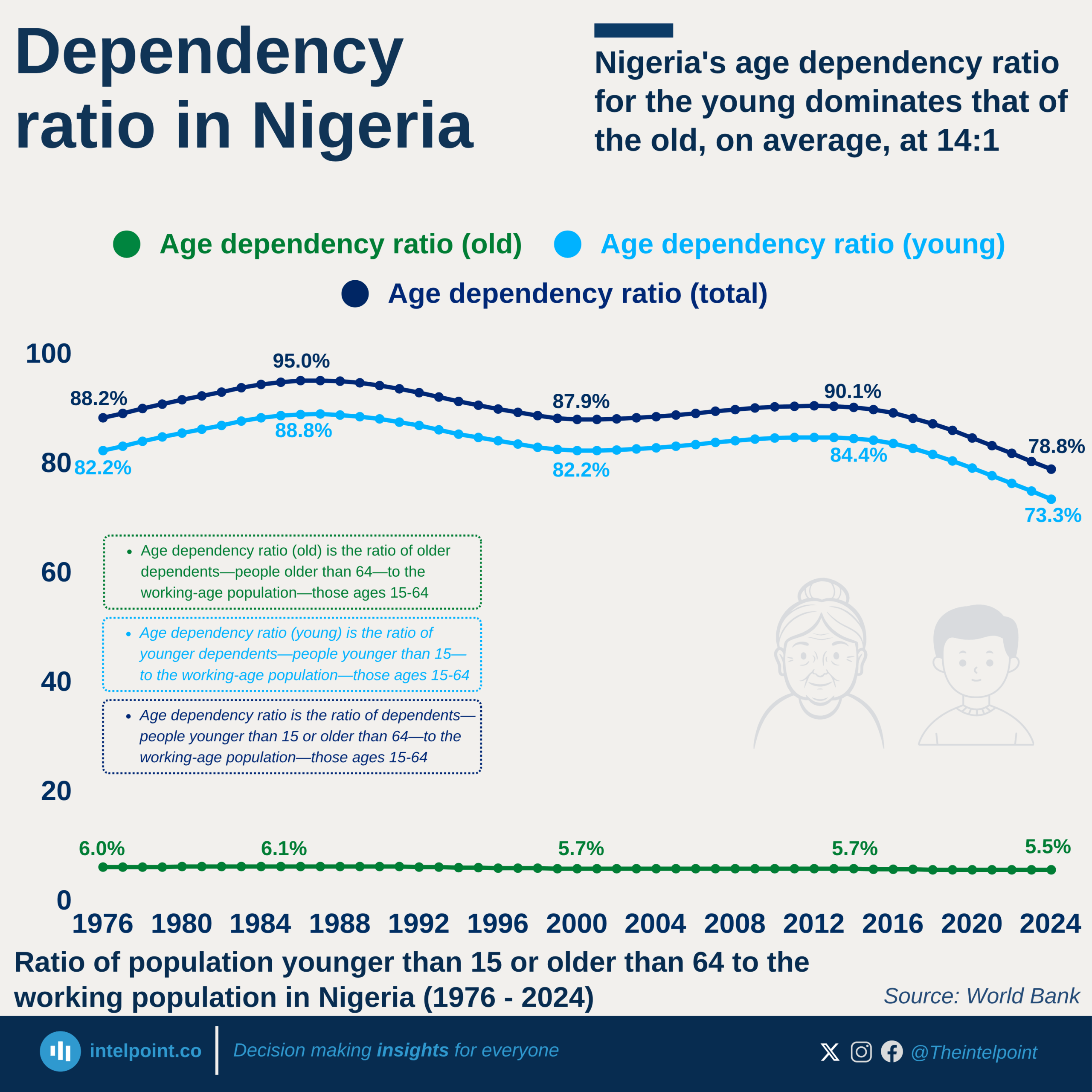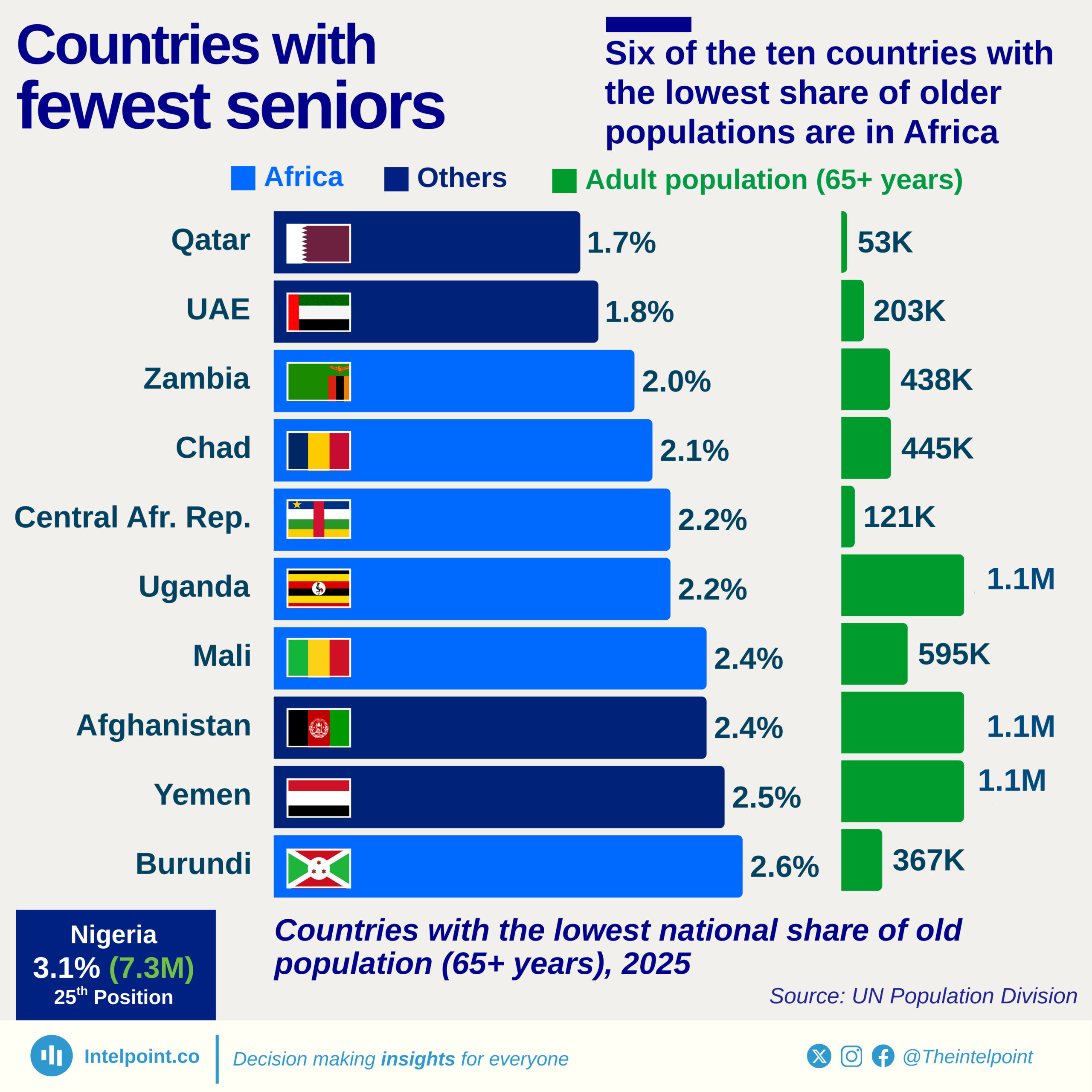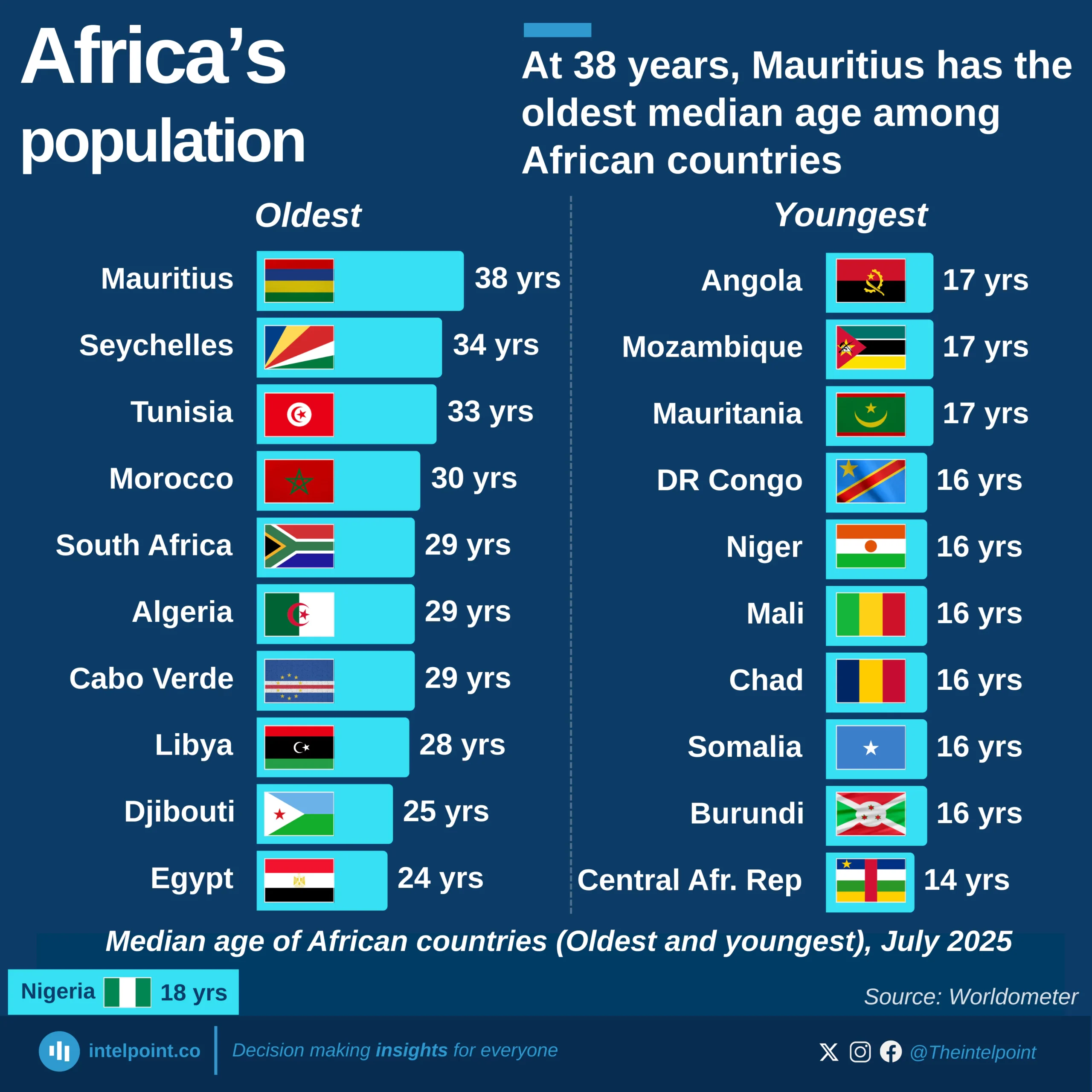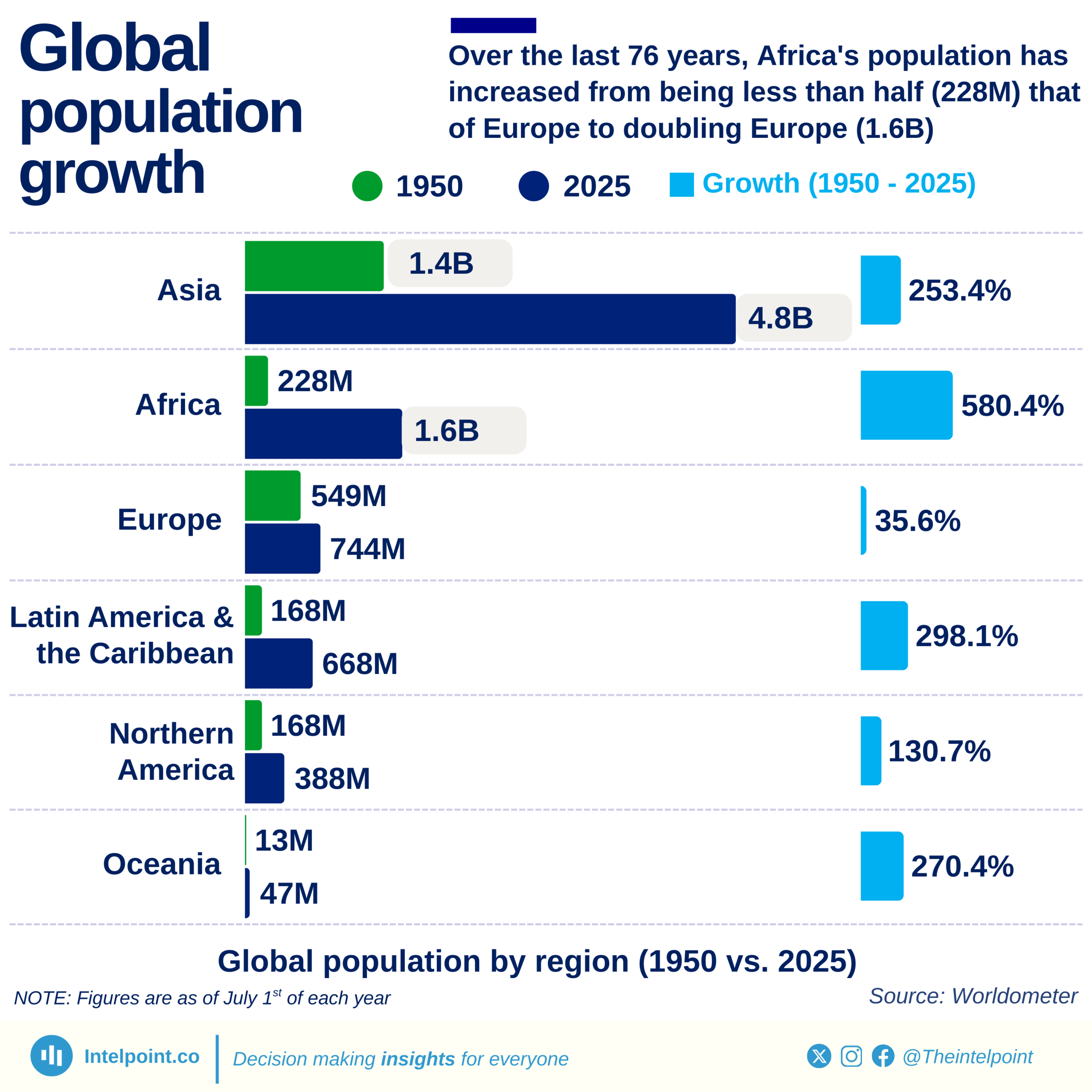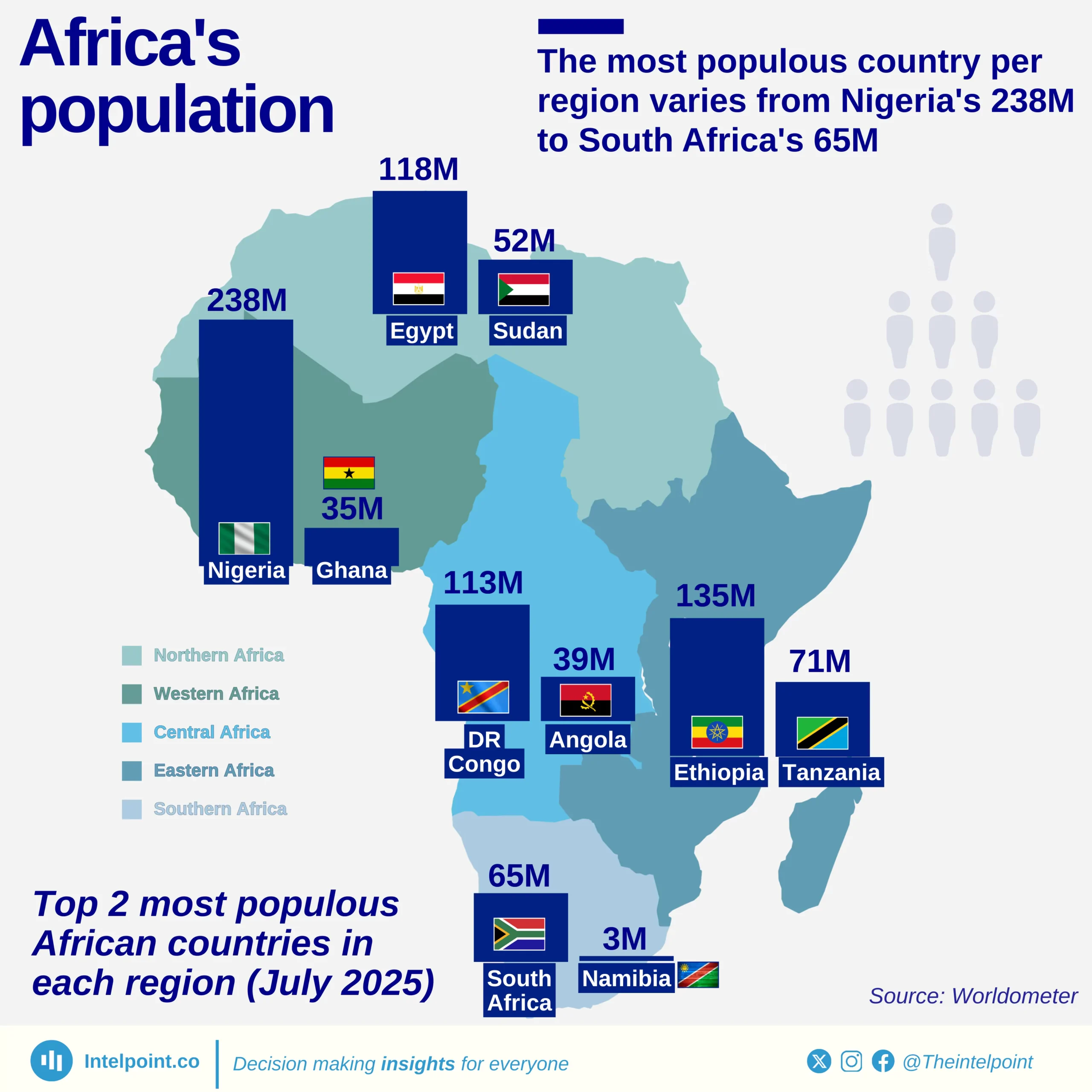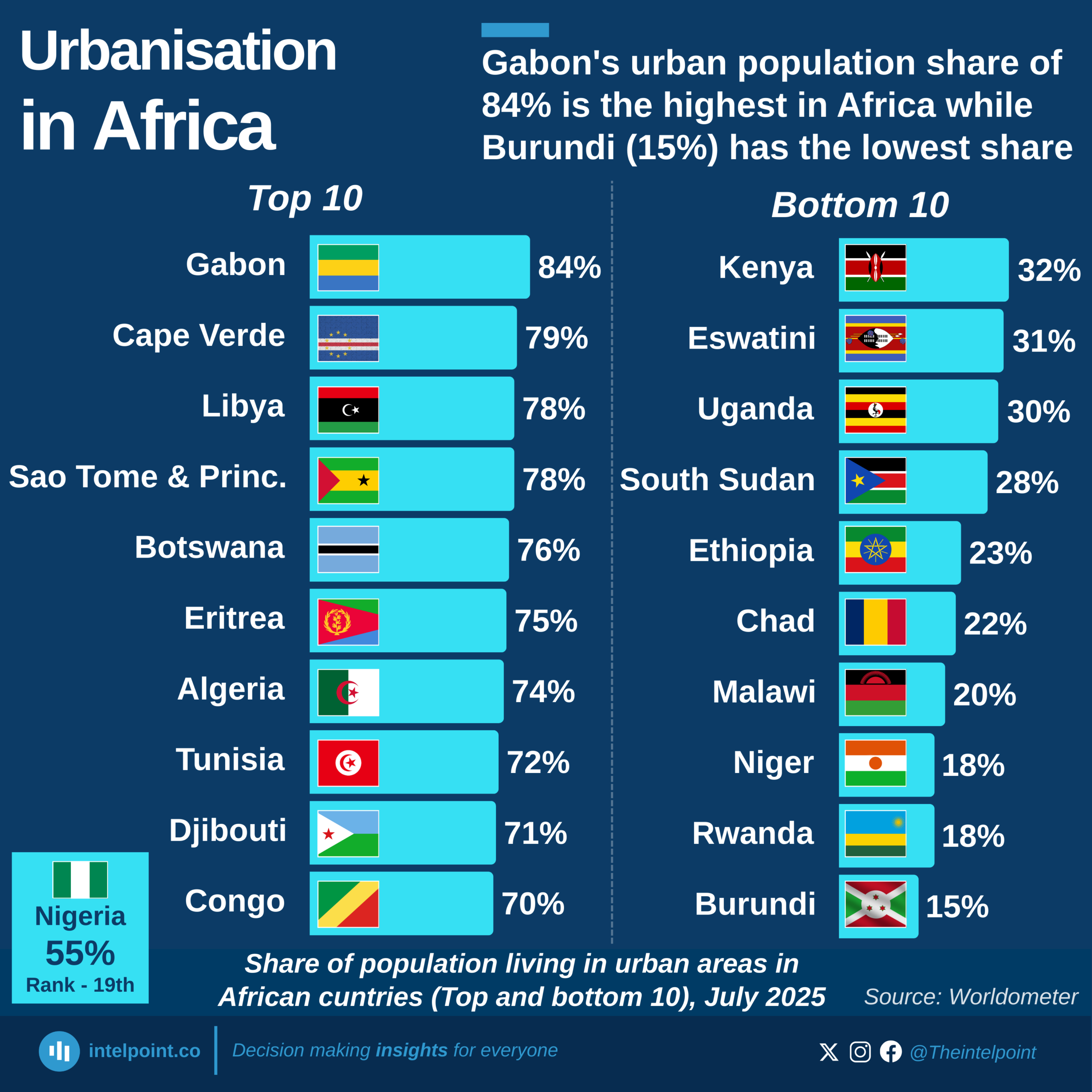Over the last 10 years, the millionaire population has sharply declined in several emerging and middle-income nations, with Lebanon (-60%) and Nigeria (-53%) leading the global downturn. These figures underscore a significant trend: a wave of capital and talent leaving countries grappling with instability, inflation, and policy uncertainty.
Among the top 10, three African nations stand out: Nigeria (-53%), Angola (-36%), and Egypt (20%), suggesting that the continent’s wealth base is not only shrinking but also relocating. Nigeria’s -53% drop, in particular, reflects a deepening lack of confidence in the economic environment. From insecurity to currency devaluation, the flight of millionaires speaks volumes about the challenges the elite face in maintaining and preserving wealth locally. Other countries in the top 10, like Pakistan (-40%) and Argentina (-26%), share similar symptoms: economic volatility, governance issues, and reduced investor trust.
